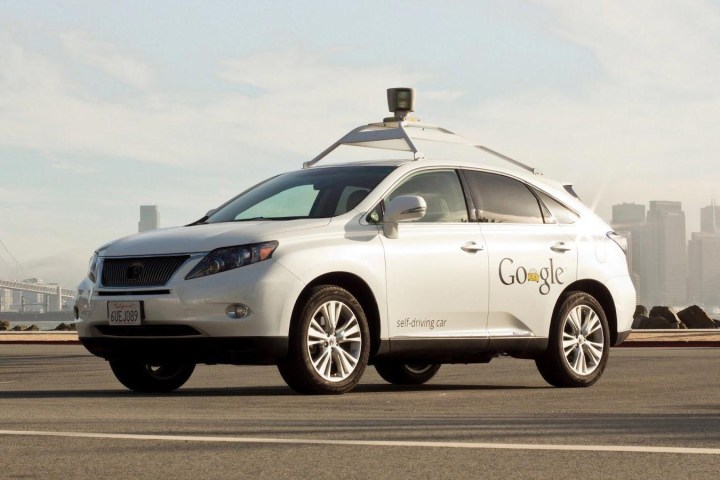
Google’s high-tech cars have been involved in a few bumps and scrapes over the years, the vast majority involving relatively minor rear-ending accidents caused by other drivers at intersections.
In recent days, however, one of its self-driving Lexus SUVs suffered its worst crash to date, again caused by another car user. No one was hospitalized in the accident, which happened close to Google’s headquarters in Mountain View, but a photo captured shortly after shows a severely damaged passenger door where the impact occurred.
#SelfDriving Google car involved in crash in #MountainView. #Google tells us the other vehicle ran a red light. Photo by @grommet. pic.twitter.com/Wwu5MYGPDJ
— Katie Marzullo (@KatieABC7) September 24, 2016
Google issues monthly reports outlining developments in its driverless car project, and no doubt this particular incident will be detailed in its next one due for release at the end of this month. In the meantime, it issued a statement offering a few details.
It explained how one of its Lexus SUVs was driving through Mountain View “when a car heading westbound on El Camino Real ran a red light and collided with the right side of our vehicle.”
Suggesting its self-driving car wasn’t at fault, Google said its light was green “for at least six seconds before our car entered the intersection,” soon after which the other vehicle hit its own.
Google noted: “Thousands of crashes happen everyday on U.S. roads, and red-light running is the leading cause of urban crashes in the U.S. Human error plays a role in 94 percent of these crashes, which is why we’re developing fully self-driving technology to make our roads safer.”
Besides Mountain View, Google is also testing its fleet of 58 vehicles – a mix of modified Lexus cars and its own purpose-built “pod” cars – in Austin, Texas; Phoenix, Arizona; and Kirkland, Washington. In August the vehicles traveled a record monthly total of 170,000 miles, 126,000 of which were driven autonomously.
“Given that the average U.S. adult drives around 12,000 miles a year, our self-driving cars have navigated the equivalent of 10 years of human driving in just 31 days,” Google said. The company reported just two accidents in autonomous mode during August, both of which were low-speed collisions where another vehicle rear-ended Google’s car.
To date, there’s been only one accident where the company’s self-driving car was at fault while in autonomous mode, coincidentally on the same stretch of road as this latest incident.
Editors' Recommendations
- Cruise autonomous vehicle drives over woman just after she was hit by another car
- Officers confused as they pull over an empty self-driving car
- We now know what the self-driving Apple Car might look like
- Watch San Franciscans take a ride in Waymo’s self-driving car
- Tesla issues stark warning to drivers using its Full Self-Driving mode


